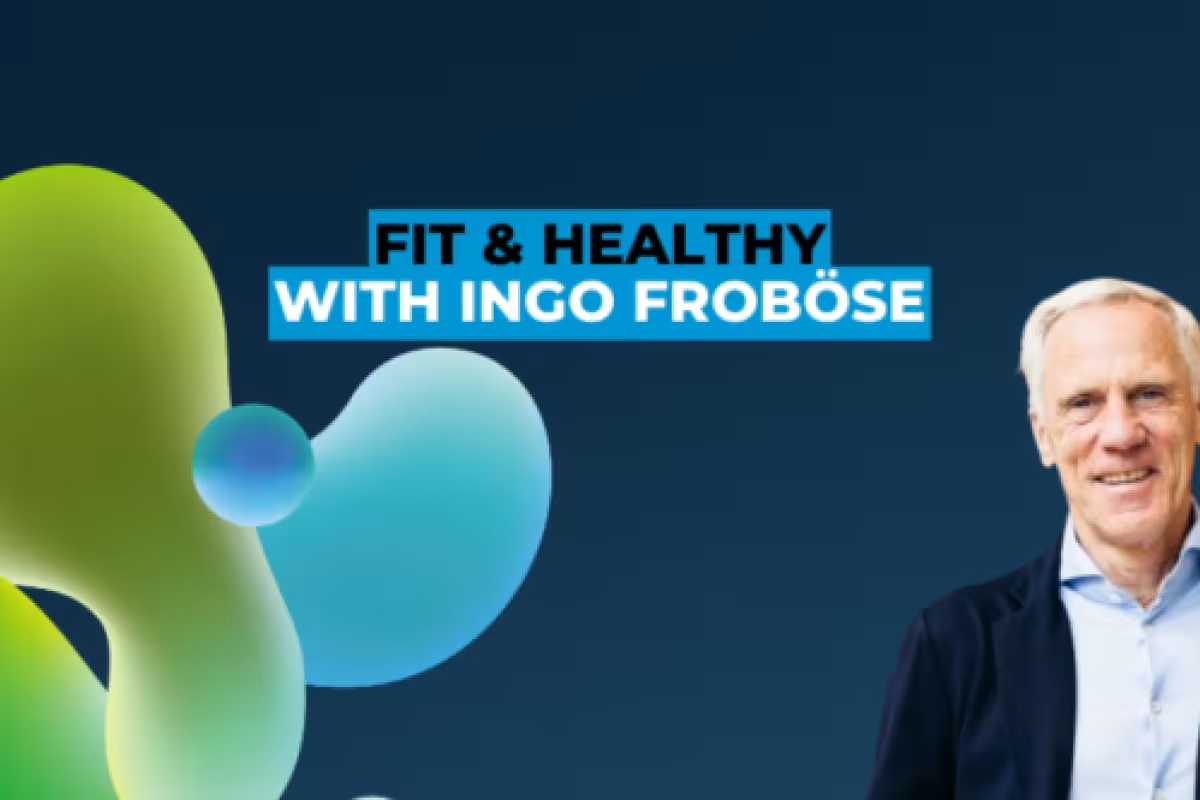
Around the clock, day in and day out, some 654 muscles work for us so that we can carry out everyday movements or even sporting activities. It is the successful interaction of muscle work and our nervous system that enables us to do what we do. So anyone who has so far reduced muscles to their looks is doing them an injustice! Their inside is a true marvel and makes them the basis for our quality of life.
Everyday Hero Musculature
While you are surfing on your smartphone or computer and have called up this article, numerous muscles have already been at work for you without you giving them a second thought. These everyday actions only come to our attention when they no longer function as well as we are used to: for example, when it is difficult to climb stairs or our back hurts when we lift something heavy. Working together with our nervous system and our brain, our muscles are the basis for a healthy life and can do almost anything we want, right up to spectacular performances in sport. In the process, it proves time and again how adaptable and capable of learning it is.
Muscle cells know no age
Whether you are a no-fitness person or a competitive athlete, we were born with muscles. And it is only through our actions that they continue to develop. The early childhood urge to move challenges them daily, but it is hormonal changes during puberty that promote their rapid growth. Like everywhere else in our bodies, age also leaves its mark on our muscles. From the age of 30, we lose about one percent of our muscle mass every year, with dramatic consequences for our health. By the time we reach the age of 80, this development means a gradual loss of about 30 to 50 per cent of our muscle mass and thus losses in mobility and independence!
Fortunately, this muscle loss in old age is not an insurmountable fate that we are helplessly at the mercy of. The solution is simple: training! Because our muscles are capable of adapting their strength and volume to regular training stimuli at any (!) age. Studies show impressively: the earlier you start training your muscles, the more this pays off later in life, as strength is simply maintained for longer. But even between the ages of 60 and 80 it is possible to increase the aerobic capacity of the muscles and fitness by 20 to 30 percent and thus achieve values that untrained people have at 40. So, far from clichés, muscle training offers a valuable resource to achieve fast and efficient improvements in performance and quality of life - no matter how old we are!
Five good reasons for regular strength training
Our muscles perform at the highest level for us every day, if we take care of them regularly. Anyone who is not doing this risks quietly and secretly losing precious muscle strength and thus one of the largest active organs and its cells from the age of 30 onwards. Yet our muscles have a lot to offer:
- They provide strength for everyday life: those who are physically fit improve their quality of sleep and create valuable resilience for the strains of everyday life.
- Bones, tendons and joints benefit just as much as the muscles from regular exercise. Their strength and mobility are thus also maintained into old age.
- The cardiovascular system is not only strengthened by endurance training. It is also strengthened by regular strength training. Cardiovascular diseases can be prevented through strength training.
- Muscles function like power stations within our cells and burn calories both when active and at rest. A higher muscle mass therefore also goes hand in hand with a higher basal metabolic rate and thus prevents obesity.
- Through strength training we can specifically promote stress reduction and improve our mental balance.
Our muscles are versatile and a true comprehensive insurance when it comes to our health and fitness, which we want to maintain for as long as possible! Take advantage of regular strength training and take your quality of life to the next level!
VITA
Prof. Dr. Ingo Froböse
Born in 1957 in Unna, Ingo Froböse studied at the German Sport University in Cologne. This was followed by his doctorate in 1986 and his habilitation seven years later. During his studies he was German vice-champion several times in the 100 and 200 metre sprints. In 1982 he came fourth in the 200 metres at the European Athletics Indoor Championships in Milan. He was also active in bobsleighing.
Prof. Dr. Ingo Froböse has been a university professor for prevention and rehabilitation in sport at the German Sport University Cologne since 1995, where he also leads the Institute for Exercise Therapy. He is an expert for the Bundestag on prevention issues and works for several health insurance companies as a scientific advisor in the field of preventive health care. In addition, he is the scientific director of the Research Institute for Training in Prevention (FIT-Prävention) under the umbrella of the expert Allianz für Gesundheit e. V. The best-selling author has written numerous books on health, nutrition and fitness and is a permanent member of expert teams in renowned magazines, including Stern, Fit for Fun, GQ and Men's Health.
On stage, Ingo Froböse combines scientific expertise with personal experience and bundles them into a practical philosophy of life and targeted recommendations for action. Based on more than 30 years of research, he explains in his lectures what effects the digital revolution has on our health and what we can learn from top-class sport. Ingo Froböse also reveals how we can use the right balance of exercise, nutrition and regeneration to change our everyday life and work in order to be sustainably efficient, healthy and successful.
Sources:
M Cossio Bolaños (2019)
Copenhagen Sarcopenia Study (2019)
DC Lee (2018)